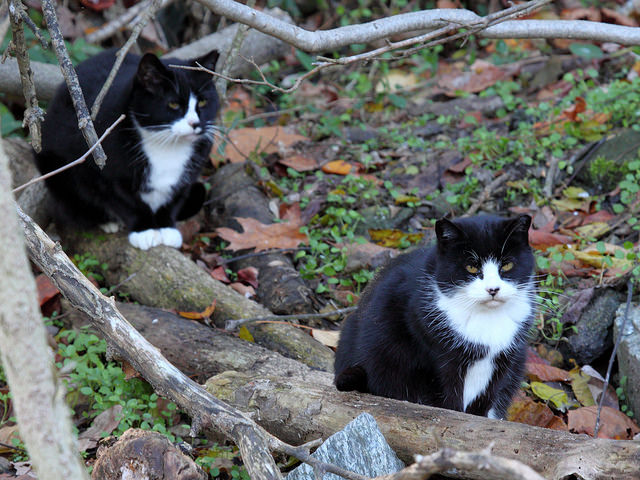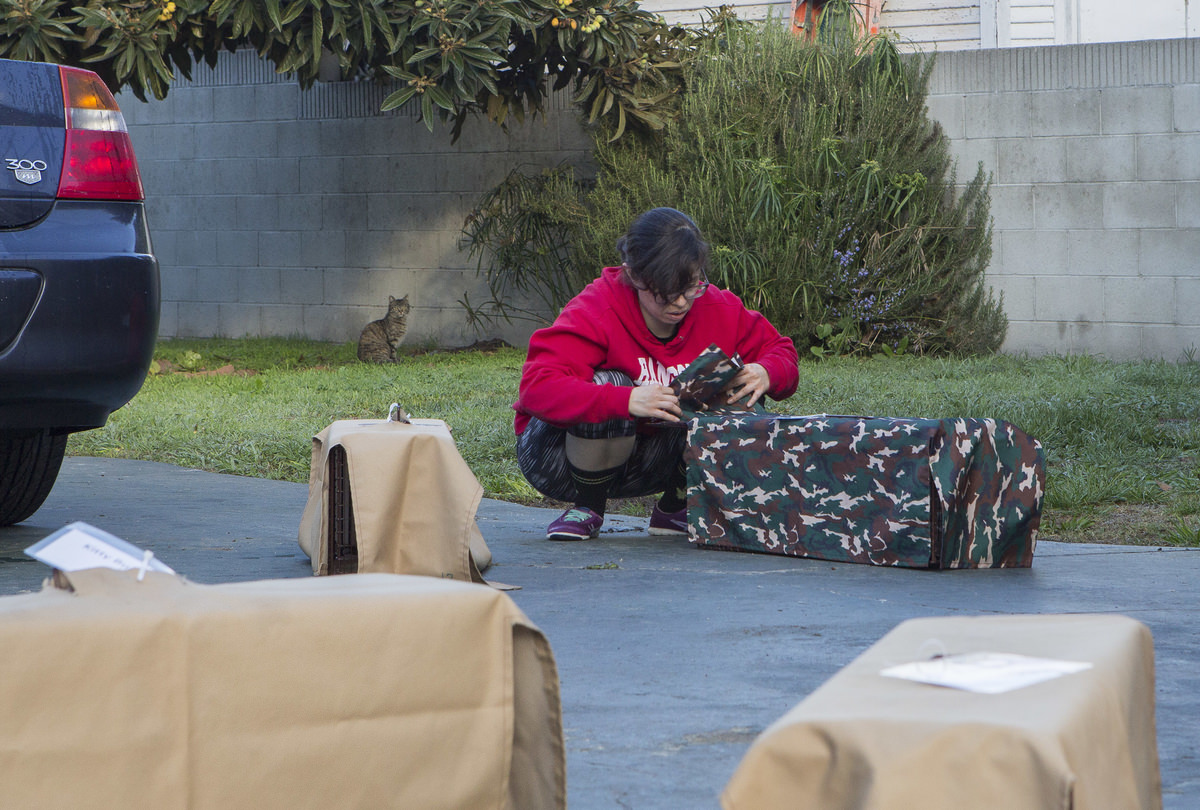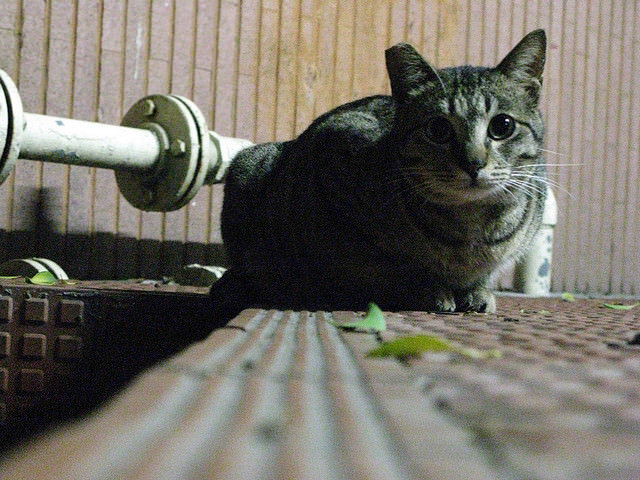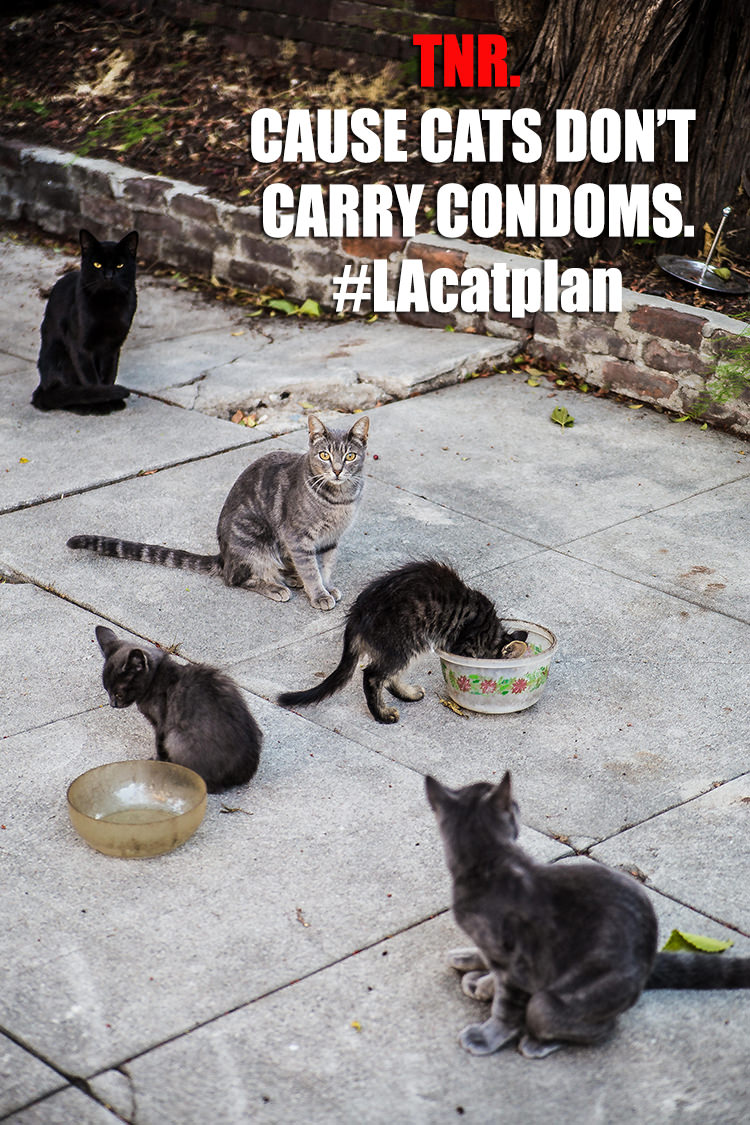
When you see a loose cat outside, what is your first thought? Do you assume he is a stray or feral cat? Do you ignore him or just figure it’s a neighbor cat that will go home? The truth is, the feral and stray cat population will never dwindle unless people step up and take responsibility.

Shawn Simone is the founder and current headmistress of Kitty Bungalow Charm School for Wayward Cats, a non-profit dedicated to “ending proliferation of homeless kittens, providing socialization services for feral kittens, placing them in life long loving homes and sterilizing truant grown ferals throughout the city of Los Angeles.” We interviewed her about the different types of cats you may have in your neighborhood and what you should be doing to help stop their numbers from growing.
What’s a feral cat?
SS: A feral cat is considered a cat born in the wild that does not have human interactions. These cats tend to be afraid of people, however, in urban settings feral cats are often fed by humans and begin to show domestic qualities. Feral cats can be tamed and become owned cats, but the most important thing to do to feral cats is to get them fixed!
The adorable kittens you find in your backyard are also feral, but if you scoop them up right away they will tame up in no time and can go into a loving home.
What’s a stray cat?
SS: A stray cat is typically a once owned cat that someone dumped behind. These cats have once been taken care of by humans and while sometimes shy or “skittish” they would love to get off the streets and onto a warm bed! Unfortunately most of these stray cats are also unfixed and that is where the feral cat problem comes from.

What’s the different between a feral cat and a “community cat”?
SS: Community cat is the proper branding term for a feral cat, because feral cats are an issue that has been caused by people (not cats). A community cat covers all the cats living on the street as they truly are community’s responsibility to care for them and stop their reproduction. In Europe they understand this concept very well, but in America there is still great friction about community cats. When travelling abroad from big cities to small towns you will see many people out feeding the cats and there is no underlying level of animosity that constantly bubbles up here in America. With the great access we have in this country to free and low cost spay and neuter, we should be able to curb this population issue as a country.
Why is it important for people to know these differences?
SS: Honestly understanding the difference is not as important as taking proactive steps with the cats, and regardless if they are feral or stray the step is the same – get the cat fixed! There are countless organizations that will spay and neuter unowned cats for free or a greatly reduced price ($30). That is the most important step anyone can take.
Why do some feral cats have a tipped ear?
SS: Ear tipping is a sign that the cat has been fixed. It is a (mostly) easily identifiable mark.

When someone notices a cat with a tipped ear, should they leave him alone?
SS: If you see an ear tipped cat you can be confident that the cat will not reproduce. The cat will also not be a fighter, mark territory and has also been vaccinated. You can leave the cat alone knowing someone else has stepped up and is taking a proactive step.
When encountering these cats, should people treat them differently depending on their “type”?
SS: All outdoor cats need to be fixed. End of story. If you see an outdoor cat in your neighborhood get that cat in to be fixed. This one step will prevent you from tripping over kittens from spring until fall.

If a cat outside needs attention (looks sick, is injured, etc), what is the best thing to do?
SS: A sick or injured cat should see a vet for assessment. The best way to accomplish that is usually renting or borrowing a humane trap in order to catch and transport the cat. Often times a sick cat can be taken care of with a long lasting antibiotic shot. If a cat is very sick or injured they shouldn’t have to suffer outside and a vet can end their suffering humanely.
If a person suspects a feral cat colony exists in their neighborhood, who should they contact about Trap-Neuter-Return (TNR)?
SS: There are many groups that help with TNR. First thing is to locate one in your area, which is easy to do with the internet. Alley Cat Allies is also a national organization that may have information of TNR groups in your neighborhood. While you are looking for a group that can assist and guide you, start off by feeding the cats at the same time in the same place daily. Also, talk to your neighbors and find out if any of them are feeding the cats. This will help you get a handle on how many cats there may be in the colony and also get them on a feeding schedule which will make it easier to trap them for TNR.
Is TNR the best way to stop the community cat population? What about the effects on the environment?

SS: Currently there is a big kerfuffle regarding cats, birds and the environment. In all of the arguments the most important fact is always glossed over. The cats are already here. TNR is the most humane way to stabilize and reduce the outdoor cat population. It is our responsibility as a humane race to take care of this problem we created. If everyone cleaned up his or her own backyard, we would have the problem licked.
